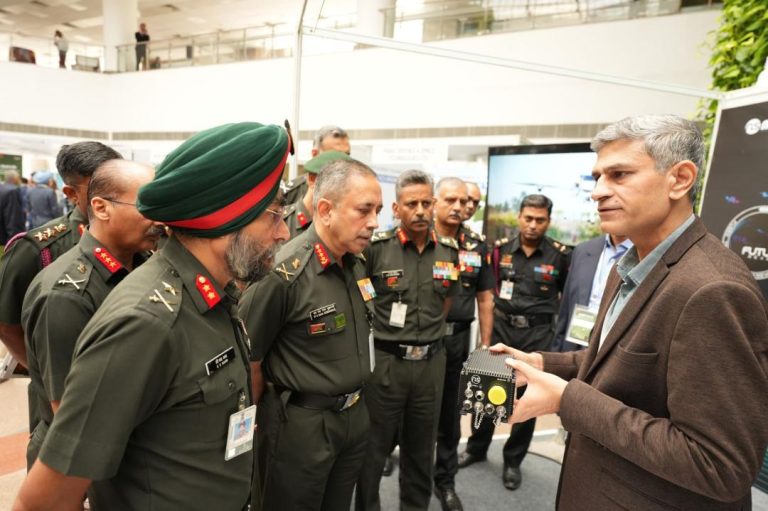
10 Years of Digital India: Milestones in Tech, Health & Education
October 2015 marked a significant milestone in India’s digital journey, as Prime Minister Narendra Modi launched the ‘Digital India’ initiative. The ambitious project aimed to transform India into a digitally empowered society and a knowledge economy. Ten years on, India has made tremendous progress in various sectors, including education, healthcare, MSMEs, and artificial intelligence (AI). In this blog post, we’ll explore the key milestones achieved by Digital India and its impact on the country’s growth.
Education: Empowering Digital Learning
One of the primary focuses of Digital India was to improve the country’s education system. The government launched initiatives like the National Digital Library (NDL) and the e-PoS system to enhance digital literacy, especially in rural areas. The NDL, a digital repository of over 50 million e-books, provides students with access to a vast array of educational resources. The e-PoS system, on the other hand, has enabled schools to digitize their administrative tasks, freeing up resources for more important activities.
Digital India has also played a crucial role in promoting online education. Platforms like National Education Network (NEN) and National Digital Platform for Education (NDP) have enabled students to access quality educational content, thereby bridging the gap between urban and rural education.
Healthcare: Leveraging Technology for Better Outcomes
Digital India has also made significant strides in the healthcare sector, leveraging technology to improve patient outcomes and enhance healthcare services. The government launched initiatives like the National Health Mission (NHM) and the Ayushman Bharat Digital Mission (ABDM) to improve healthcare infrastructure and access.
The NHM, for instance, has enabled healthcare providers to digitize patient records, reducing errors and improving overall care. The ABDM, on the other hand, aims to create a robust digital infrastructure for healthcare, enabling seamless patient data exchange and improving healthcare outcomes.
MSMEs: Empowering Local Businesses
Digital India has also focused on empowering Micro, Small, and Medium Enterprises (MSMEs), recognizing their critical role in driving economic growth. Initiatives like the GeM (Government e-Marketplace) platform have enabled local sellers to connect with government buyers, boosting their visibility and sales.
The ONDC (Open Network for Digital Commerce) platform, launched in 2021, has further amplified the reach of local sellers, enabling them to sell their products on multiple e-commerce platforms. This has not only improved their market access but also created new job opportunities.
Artificial Intelligence: A $1.2B Mission
India has also made significant progress in artificial intelligence (AI), recognizing its potential to transform various sectors. The government launched the National AI Mission (NAM) in 2020, with an allocation of $1.2 billion to promote AI research and development.
The NAM aims to build a robust AI ecosystem, enabling Indian startups and industries to develop innovative AI solutions. The mission also focuses on creating a skilled AI workforce, recognizing the need for specialized talent to drive AI adoption.
Startups: Thriving in a Competitive Landscape
India’s startup ecosystem has thrived under Digital India, with the government launching initiatives like the Startup India program to promote entrepreneurship. The program has enabled startups to access funding, mentorship, and other resources, helping them scale and grow.
India’s startup ecosystem has also seen significant growth, with the country now home to over 50,000 startups. The startup ecosystem has created new job opportunities, driving economic growth and innovation.
Affordable GPU Access: A Game-Changer for AI Adoption
Digital India has also made significant progress in providing affordable GPU (Graphics Processing Unit) access to Indian startups and researchers. The government launched the National Supercomputing Mission (NSM) in 2015, with a focus on creating high-performance computing infrastructure.
The NSM has enabled Indian researchers to access high-performance computing resources, accelerating AI research and development. The initiative has also enabled Indian startups to access affordable GPU resources, driving AI adoption and innovation.
Conclusion
Ten years of Digital India have been marked by significant progress in various sectors, including education, healthcare, MSMEs, and AI. The initiative has empowered local businesses, promoted entrepreneurship, and driven economic growth. As India looks to the future, it’s clear that the country is committed to adopting a humanity-first approach to technology, leveraging AI and other digital technologies to improve the lives of its citizens.
As Prime Minister Narendra Modi noted during the 10-year anniversary celebrations, Digital India has played a critical role in transforming India into a digitally empowered society. As the country continues to evolve and grow, it’s clear that Digital India will remain a vital driver of progress, innovation, and economic growth.
News Source:






